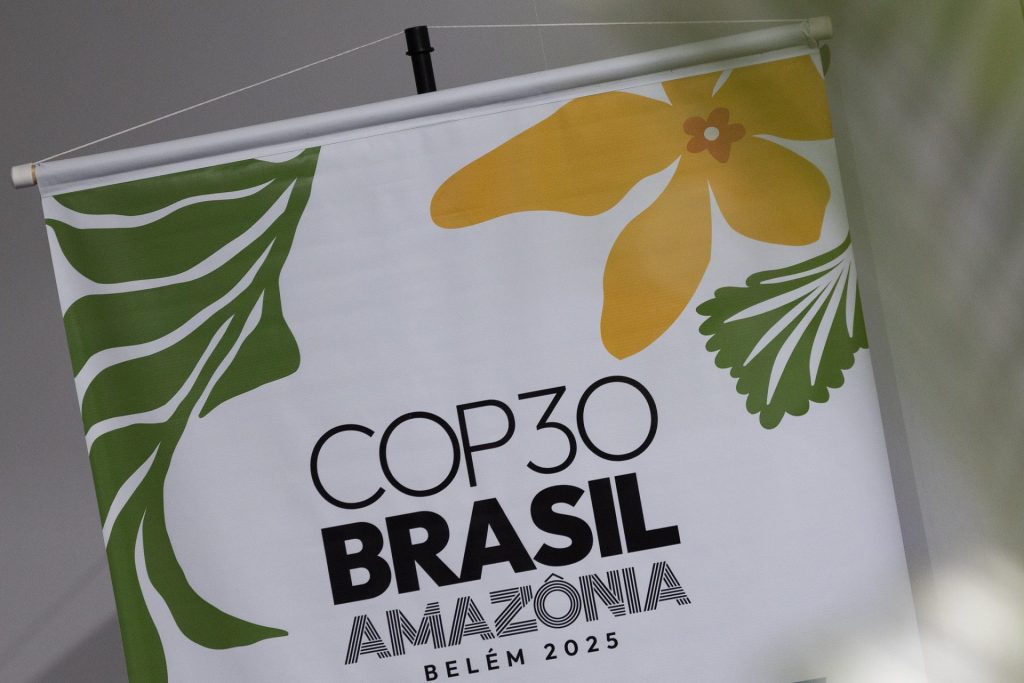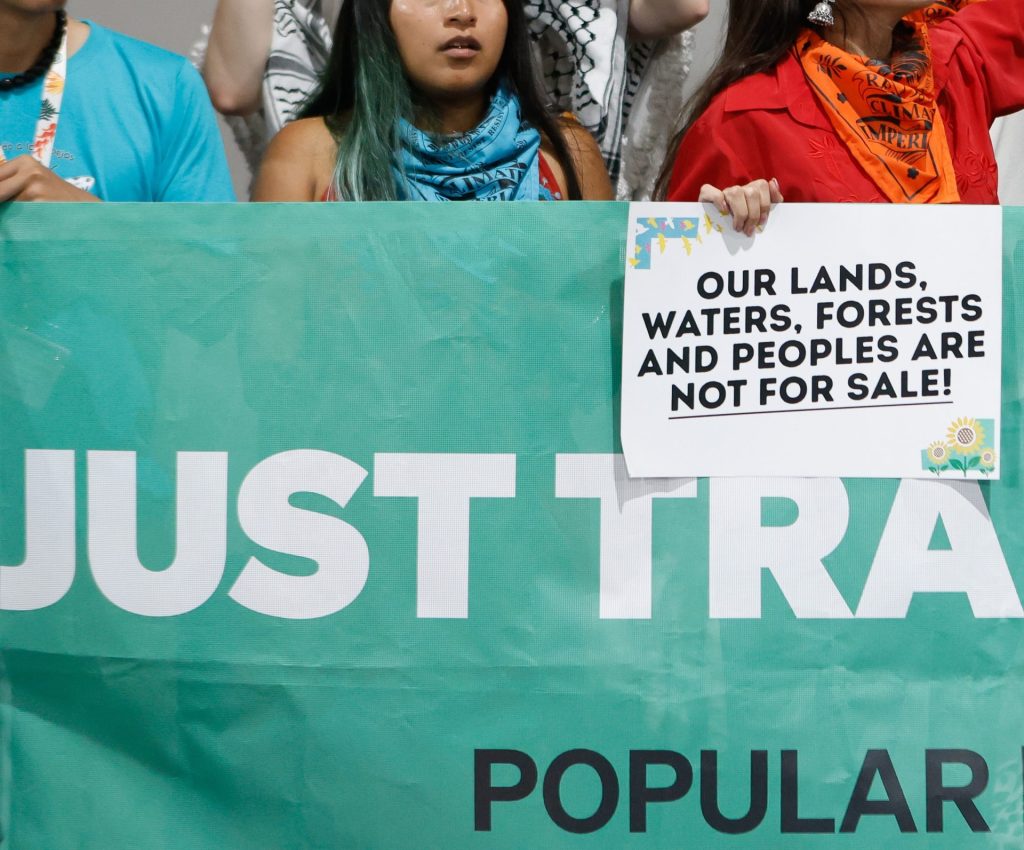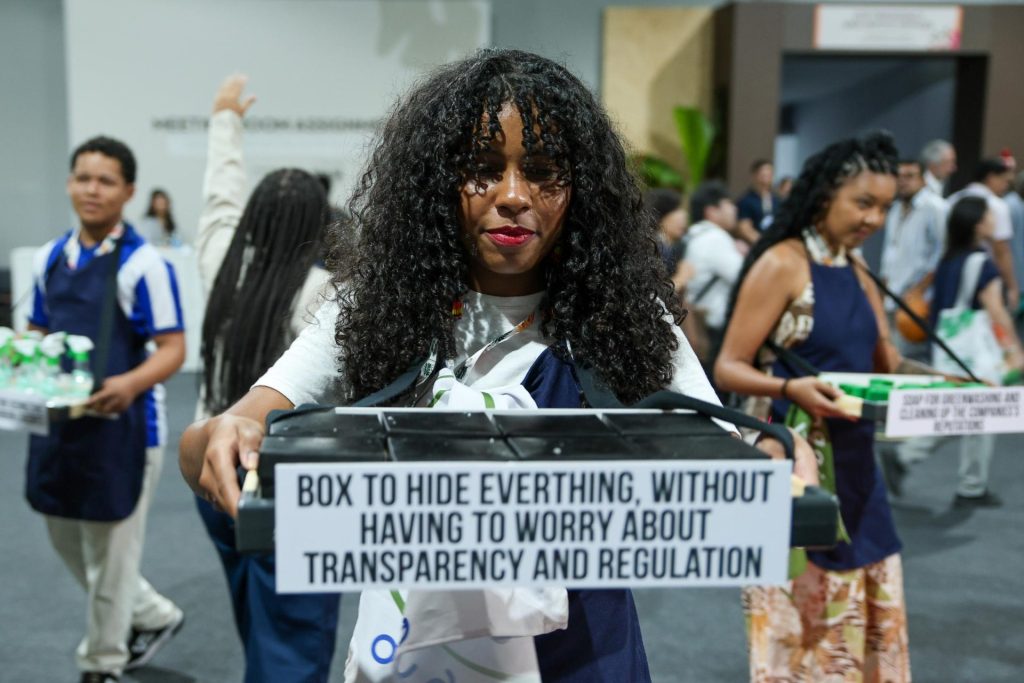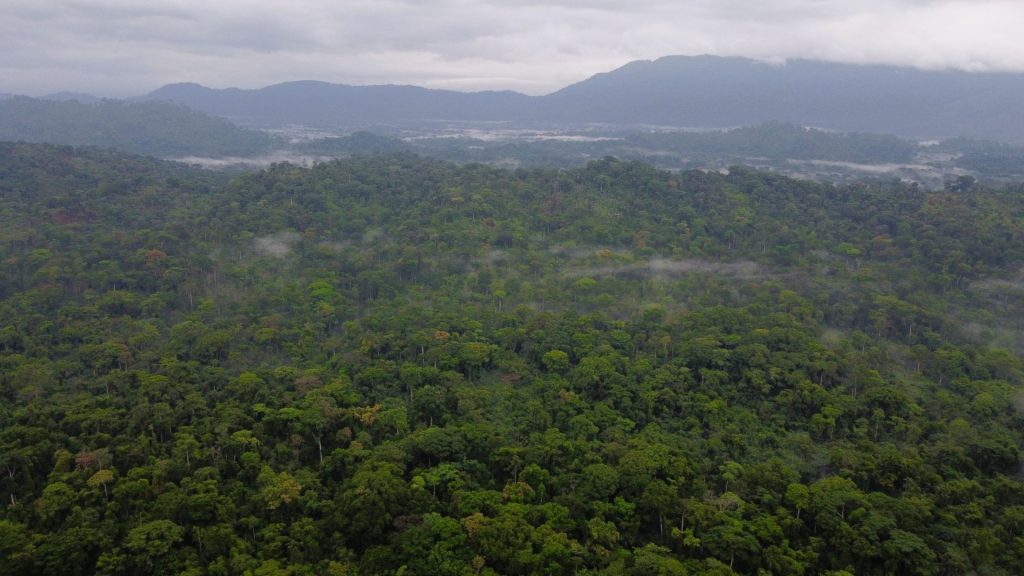With the withdrawal of the United States from the Paris Agreement earlier this year, lacklustre levels of international climate finance, dwindling levels of confidence in multilateralism and geopolitical fragmentation, and with only a slow trickle of revised Nationally Determined Contributions (NDCs) to date, expectations for COP30 have been relatively low. On the other hand, this year will be the first year in many that the COP will not be hosted in a petro-State. Instead, it will be held at the mouth of the Amazon River, in Belém, the gateway to the world’s largest tropical rainforest. Notwithstanding questions raised about the host state granting oil exploration licenses close to the Amazon, COP30 President-designate, Ambassador André Corrêa do Lago has been working hard at making it an “implementation COP”, something with a focus on action instead of “words and texts”. Others have dubbed it the “forests COP”, “nature COP” or “adaptation COP”.
Whatever it may become, the bar was set relatively low at the end of last year, with a disappointing New Collective Quantified Goal on Climate Finance (NCQG), and a lack of agreement on key workstreams including the Global Goal on Adaptation (GGA) indicators, the UAE Dialogue on implementing the Global Stocktake (GST) outcomes, and the Just Transition Work Programme (JTWP). All of these issues were left hanging to resolve this year. There is no key outcome that takes the spotlight at this year’s COP – unlike the Loss and Damage Fund, GST, and NCQG of previous COPs. Instead, if the COP can at minimum achieve a positive outcome on these three outstanding items, it probably will have achieved more than its predecessor.
In this brief, we highlight the key issues being discussed this year. It is primarily a technical one and so the nature of the negotiations has that favour, with many procedural decisions dominating discussions. We discuss adaptation, the Baku to Belem Roadmap, the Tropical Forest Forever Facility, NDCs, the Just Transition Work Programme, the GST, Loss and Damage, Carbon Markets, and more.
Adaptation
Adaptation is set to take centre stage at this year’s COP. After years of slow progress, in 2023 countries agreed to the UAE Framework for Global Climate Resilience as part of the Global Goal on Adaptation (GGA). On this year’s agenda is agreement on the indicators to track its implementation. In 2023, African countries were disappointed by the lack of specificity of the Framework’s targets, and a lack of targets on means of implementation for finance, technology transfers and capacity building, and there was contention last year on how finance would be addressed within them, if at all. Following the June climate meetings in Bonn and a follow-up meeting in October, negotiators agreed to a list of 100 indicators that will be up for deliberation at COP30. Following tense negotiations in June, these now include tracking measures for means of implementation such as finance.
Also, up for discussion at COP is the Baku Adaptation Roadmap (BAR), which is meant to provide a framework for implementing the GGA after COP30. But countries disagree on the roadmap’s structure and focus. Developed countries want to continue to focus on existing workstreams, whereas the Arab Group wants the inclusion of additional technical work.
The target to at least double adaptation finance by 2025 which was set out in the Glasgow Climate Pact in 2021, will also expire this year and some have suggested it be replaced by a new adaptation finance target, possibly a tripling of adaptation finance by 2030. The NCQG does not have a quantitative sub-goal for adaptation finance, but failed attempts to include one within it last year do not bode well for a new adaptation finance target this year.
Negotiations will discuss moving the Kyoto Protocol’s Adaptation Fund to the Paris Agreement, building on discussions at the Bonn climate talks. The Fund’s replenishment is also up for consideration. As it stands, because its income comes from a share of proceeds under the carbon market, it has suffered from a dip as Article 6 is still in its design and early implementation phase.
Lastly, National Adaptation Plans (NAPs) and their financing remain on the agenda. Discussions will take stock of progress developing countries have made in their NAPs and make recommendations to finalise the NAP assessment report. CO30 is especially important considering that discussions on support for NAPs nearly derailed COP29 negotiations with developed countries suggesting that somehow the private sector should step in to provide finance for this critical aspect of adaptation planning.
Tropical Forest Forever Fund
The incoming COP30 President has put a renewed focus on ending forest loss and boosting finance for it, following the Global Stocktake’s call to halt and reverse deforestation and forest degradation by 2030. In setting the tone for the negotiations, Brazil launched its Tropical Forest Forever Facility on 6 November, which drew pledges of support from a handful of countries. Norway committed to $3 billion in loans over the next ten years, Colombia committed $250 million, the Netherlands $5 million for the fund’s secretariat, and Portugal $1 million. Controversially, the United Kingdom which had initially supported the proposal said it would not pledge taxpayers’ funds towards it. The fund needs $25 billion in initial pledges from governments and philanthropies to attract an additional $100 billion from private investors, for a total target of $125 billion. These funds will be invested, and additional returns will be given to countries that sufficiently protect their forests.
Baku to Belem Roadmap
Led by the COP29 and COP30 Presidencies, the Roadmap is meant to provide a framework for scaling climate finance to reach the NCQG of $1.3 trillion. This Roadmap was agreed to in the disappointing aftermath of the NCQG last year as a way of appeasing developing country concerns that there was no agreed way forward on how the target would be achieved and no detail to the NCQG. But what it should cover was not decided at the time. The LDC Group, G77 and China have argued that the focus should be on the legal obligation of developed countries to provide finance. The LDC Group also wants the Roadmap to recognize country-led efforts and to ensure that existing financial mechanisms under the UNFCCC are more accessible. Addressing barriers to concessional finance is also a high priority, as well as debt and fiscal stability.
On the other hand, developed countries argue for a more ‘holistic’ approach. This includes supporting solidarity levies, Special Drawing Rights, national development banks and multilateral development banks (MDBs). The EU wants the Roadmap to focus on the inclusion of the private sector and activating private finance.
The Roadmap is likely to sit outside but alongside formal negotiations, as a product of the COP Presidencies, and it remains to be determined how negotiators will recognize and incorporate its content. It is noteworthy that the incoming COP Presidency has been reluctant to develop a COP cover decision this year citing difficulties in reaching consensus, and shared frustrations with finalising cover decisions in time. If one is developed it would be the most appropriate place to recognize the Roadmap, if at all.
Updated NDCs
This year, countries were due to submit their third round of revised NDCs under the Paris Agreement. The original date of February was shifted out to September, at which time only 64 parties had submitted. At the time of writing the figure is 72. This week the United Nations Environmental Programme concluded that UNEP released its Annual Emissions Gap Report, which concluded that even in the most ambitious scenario – where pledges and commitments are achieved in full– there is only a one-in-five chance of limiting global warming to 1.5C in this century. Instead, the latest plans set the world on course of 2.3 to 2.5°C warming this century, barely moving the needle on the ambition gap. Similar findings were made in the UNFCCC’s recent NDC Synthesis Report. Since only a portion of NDCs were submitted when these reports were drafted, they are not fully representative, however they do not bode well. It remains to be seen how parties will respond to the latest round, for example will they call for a round of revisions to “strengthen” their NDCs, as was the case in Glasgow in 2021, or will it be addressed in the cover decision, if any.
Just Transition Work Programme
Disagreements over the applications of the just transition and its priorities have affected the Just Transition Work Programme’s (JTWP) progress. Developed countries historically have want to prioritize the transition away from fossil fuels and national implementation and policies. On the other hand, developing countries emphasise the society wide nature of the transition, its expansive scope, and the need for international finance. They are critical of unilateral trade measures and are lobbying for this topic to be reflected in the outcome text.
Some consensus was reached at the June climate talks and for the first time negotiators agreed on a provisional text to advance the program and a consolidated draft decision which will be considered at COP. Parties now agree on the central pillars of a just transition and for support to enable countries to self-determine their own strategies. But the key issue remains: what happens next when the JTWP’s mandate expires at the end of 2026. They can improve on the existing modalities, create an institutional arrangement or defer the decision to next year.
The Africa Group is keen for an actionable outcome that furthers the work of the programme into a more formal mechanism. To this end it has suggested a Global Just Transition Framework, with outcomes that facilitate energy access and technology transfers. Multiple other countries including the G77 also support a new “arrangement”. The EU is focused on translating messages from the JTWP into actionable NDCs and NAPs, i.e. translating actions into local instruments and deferring the decision. COP30 is an opportunity to find common ground.
Global Stocktake
Discussions on the Global Stocktake (GST) since COP28 have stalled on the inclusion of the fossil fuel transition in the GST text, reporting on implementation and the provision of finance. Although there isn’t a single African position on the issue, there is general support for implementing the full scope of the GST, while some countries want the implementation discussion to just focus on finance. At COP30, countries will have to reach an agreement on how to implement the GST and what will be discussed as part of that.
Loss and Damage
Funding is the most significant issue for loss and damage. The Fund for Responding to Loss and Damage (FRLD) had received approximately USD768 million in pledges from 27 contributors in 2025. The focus is now on ensuring easy and direct access to the FRLD and securing significant pledges for its replenishment at COP30. This is particularly difficult given that loss and damage has struggled to maintain momentum since the establishment of the FRLD, with accusations that the COP30 Presidency has sidelined the topic against other priorities. There is some hope: the recent ICJ advisory opinion which clarifies that states may be legally liable for climate change (including loss and damage) can be a negotiation tool for vulnerable states to wield for more financial support out of developed ones.
The review of the Warsaw International Mechanism, will also provide an opportunity for parties to focus on the funding gap, address the lack of data and information, and bring more coordination to the institutional arrangements designed for loss and damage. This issue could not be finalized at COP last year due to disagreements and remains a central one on this year’s agenda.
Carbon Markets
Negotiations on carbon markets (Article 6.2. and 6.4.) are now focused on implementation. Key issues include ensuring credibility of the Paris Agreement Crediting Mechanism (PACM), phasing out the Clean Development Mechanism (CDM) and transitioning projects to the PACM, and the level of flexibility allowed for nature-based projects to generate credits. This issue is particularly relevant for African countries, as Article 6 carbon markets are earmarked as a notable source of future climate finance. The COP30 Presidency has also been promoting integration of global carbon markets, a delicate issue but certainly relevant African countries, many of which are in the design or early implementation phases of new carbon market regulations.
Gender Action Plan
COP30 is expected to finalise and adopt a new Gender Action Plan (GAP). Under the Enhanced Lima Work Programme on Gender, the plan will guide parties on how to integrate gender equality and women’s empowerment in climate action plans.
Conclusion
Finance remains the biggest challenge for COP. Developing countries are still disappointed by the NCQG, and countries continue to shift responsibility on which states should be providing climate finance, how much, and for what, and whether to even discuss it within the various negotiation rooms. The Baku to Belem Roadmap could facilitate a pathway forward but will not be sufficient to compel action. There is also divergence on the purpose and outcomes of work programmes and dialogues, with disagreements on whether they should be facilitative or more action orientated. Ultimately, this year’s COP is burdened by the legacies of its predecessor and the poorly facilitated outcomes of COP29. If indeed parties are willing and to turn this COP into showcase of support for multilateralism, as they have indicated they do, they will have to show a more conciliatory appetite on the question of finance and deal with it directly in a dedicated forum, instead of proxy battles within parallel negotiation tracks.





